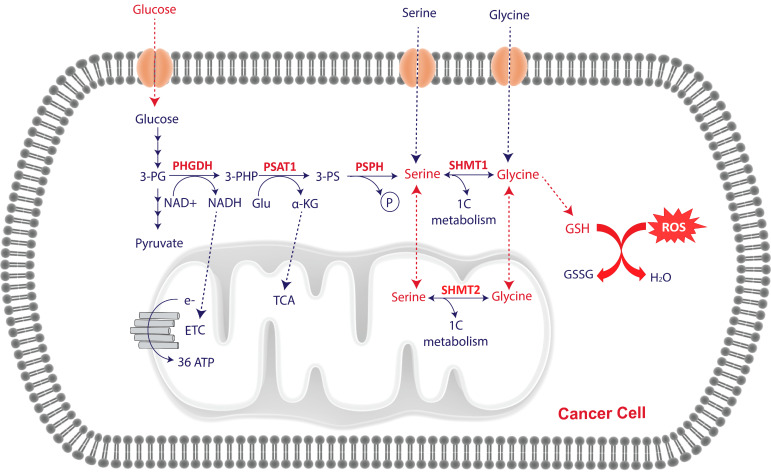Figure 1.
Overview of serine/glycine biosynthesis pathway activation in cancer. Serine/glycine biosynthesis pathway branches from the glycolysis, in which the intermediate 3P-glycerate is converted into serine and glycine after a chain of consecutive enzymatic reactions controlled by PHGDH, PSAT, PSPH, and SHMT1/2 enzymes. Cancer cells are characterized by activation of de novo serine/glycine biosynthesis to meet their high biosynthetic and energetic requirements. Activation of de novo serine/glycine biosynthesis and one-carbon (1C) metabolism promote purine and pyrimidine synthesis and supports lipid metabolism, as well as produces reductive equivalents to control redox homeostasis and α-ketoglutarate and S-adenosyl methionine (SAM) to regulate DNA and histone methylation. This representation shows the reduction of glutathione disulfide (GSSC) to glutathione (GSH), which is a tripeptide thiol antioxidant, composed of glycine, cysteine, and glutamic acid, and one of the main regulators of reactive oxygen species (ROS).

